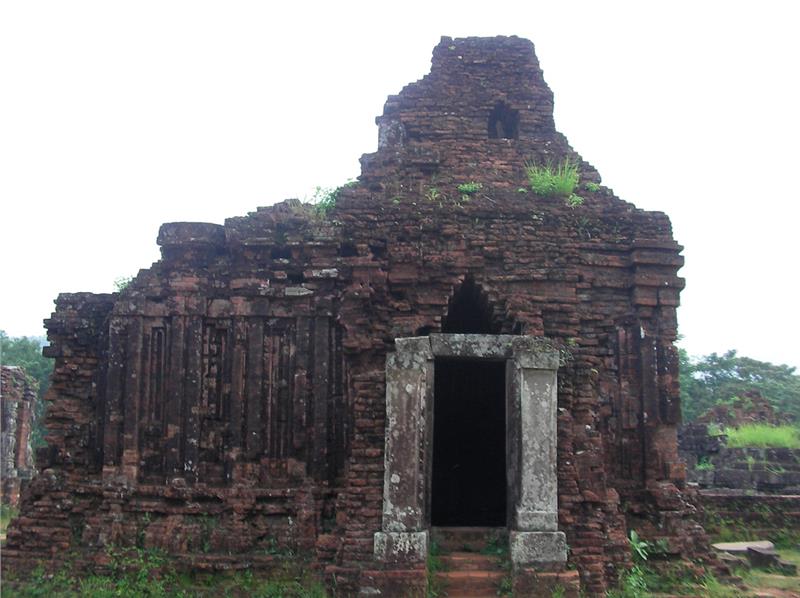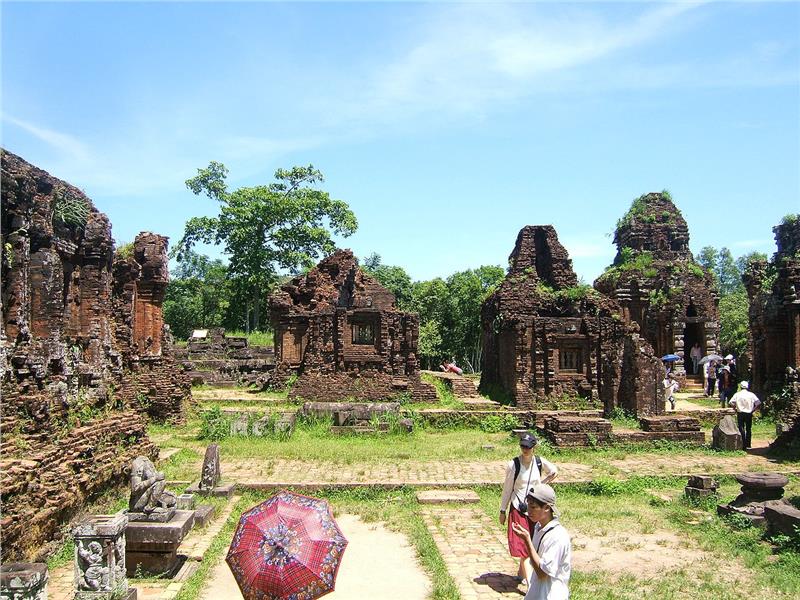My Son Sanctuary is situated in Duy Phu commune, Duy Xuyen district, Quang Nam province, about 69 km from Da Nang City and 20 km from Tra Kieu ancient capital. It is the complex of numerous Champa tower-temples in a valley roughly two kilometers wide, surrounded by two mountain ranges. This used to be a site of religious ceremony for kings of the ruling dynasties of Champa, as well as a burial place for Cham royalty and national heroes. My Son Sanctuary is regarded as one of the main religious centers of Hinduism in Southeast Asia and is the foremost heritage site of this nature in Vietnam. Notably, among 225 Cham vestiges that are founded in Vietnam, My Son possesses 71 monuments and 32 epitaphs, the content of which is still being studied. My Son Sanctuary is often compared with other historical temple complexes in Southeast Asia, such as Borobudur of Java in Indonesia, Angkor Wat in Cambodia, Bagan of Myanmar or Ayutthaya in Thailand.

My Son Sanctuary was honored as one of the UNESCO World Heritage Sites at the 23rd session of the World Heritage Committee in 1999. Based on architectural remains, My Son perhaps began construction in 4th century. Over many centuries, the holy land added a great number of multi-shaped towers to become main vestiges of Cham culture in Vietnam. Beside ceremonial functions, My Son is a cultural and religious center of Champa Dynasty, as well as the burial place for Kings, royalty and powerful national heroes. My Son is greatly influenced by Indian architecture - reflected in the temples immersed in the glorious past, and Indian culture - reflected in ancient Sanskrit inscription on steles. One of the most important steles found at My Son is erected by Dharma Prakasa in 657 AD. The purpose of steles was to commemorate the king's establishment of a god identified as the ruler of the world, i.e. Shiva. These steles are important because it sets forth the king's ancestry and is of great help in reconstructing the sequence of Champa's rulers.

Based on other numerous headstones, My Son Holly Land possessed a first wood temple in 4th century. In the early 7th century, King Sambhuvarman - Pham Phan Chi (on the throne from 577 to 629) rebuilt the temple with bricks which still exists today. Monarchs then continued remodeling old temples and built new temples to worship their own gods. Brick is actually a good material to retain memories of a mysterious nation; however, techniques of Cham tower construction has so far remained a mystery. Issues that have not been completely resolved include issues about the firing of the bricks, the mortar between the bricks, and decorative carvings found on the bricks.

Using materials of sandstone and baked-tiles, the Cham had built up a unique and uninterrupted architectural ensemble of tower-temples. Main temple worships Linga-Yoniu - the symbol of creative energy. Beside the main tower (Kalan), there is an appearance of numerous towers worshiping other gods or dead kings. In particular, My Son Sanctuary still owns a temple built in stone, which is the only stone temple of Cham ruins. In My Son epitaphs, this temple was restored last in stone in 1234. Unfortunately, the temple had been destroyed, yet it was still considered as the highest temple of the relics. With more than 70 architectural remains built from the 7th century to the 13th century, My Son becomes the most important architectural center of Champa Kingdom. The main temples at My Son worship god Shiva under the form of Linga - who protected Champa Kings. Gods worshiped at My Son is Bhadresvara, the king who founded first kings in Amaravati in late 4th century, a composite created from the king's own name and the suffix "-svara" commonly used to refer to Shiva. My Son has actually become the religious hub of Champa for many generations.

My Son is perhaps the longest inhabited archaeological site in Indochina. Although time and wars have turned numerous tower-temples into ruins, sculptural artifacts and architectural remains still reflected golden age of Cham fine arts history. These masterpieces have marked flourishing periods of Champa culture and architecture as well as in Southeast Asia. My Son Sanctuary currently hides numerous mystery strongly attracts those who passionate for discovery. Hoi An tourism thus becomes much attractive for tourists.
